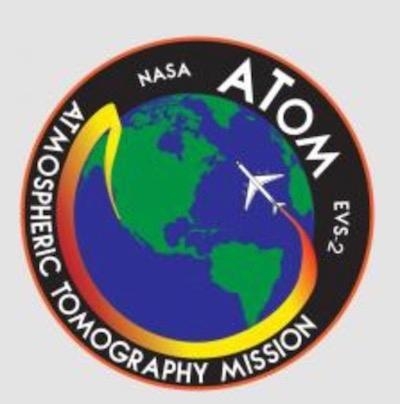Mon, Mar 26, 2018
Flights Scheduled To Begin In Late April
Since 2016, NASA's Atmospheric Tomography (ATom) mission has studied pollution and greenhouse gases in the atmosphere with the agency's DC-8 flying laboratory. Scheduled to begin in late April, the missions final 26-day journey will take researchers over the North Pole, across the Pacific Ocean to New Zealand, and on to the tip of South America before flying over the Atlantic to Greenland and returning to California.

ATom measures more than 200 gases and airborne particles in the atmosphere over the oceans to better understand how gases, such as methane, and ozone and airborne particles, such as black carbon, enter, transform and are ultimately removed from the atmosphere. These processes are key components of Earth's air quality and climate.
The mission complements NASA's satellite observations of the major gases of Earth's atmosphere. ATom deploys an extensive gas and aerosol payload on the NASA DC-8 aircraft for systematic, global-scale sampling of the atmosphere, profiling continuously from 650 feet to 7.5 miles in altitude. Flights originate from the Armstrong Flight Research Center in Palmdale, California, fly north to the western Arctic, south to the South Pacific, east to the Atlantic, north to Greenland, and return to California across central North America. ATom establishes a single, contiguous global-scale data set. This comprehensive data set will be used to improve the representation of chemically reactive gases and short-lived climate forcers in global models of atmospheric chemistry and climate. Profiles of the reactive gases will also provide critical information for validation of satellite data, particularly in remote areas where in situ data is lacking.
ATom’s tomographic, large-scale sampling combined with parcel-by-parcel quantification of photochemical tendencies provides a strong response to the 2011 NASA Strategic Plan to Advance Earth System Science: meeting the challenges of climate and environmental change on a global scale.
ATom improves predictions of human-caused and natural changes in climate forcing and air quality over the entire globe, engaging the science Focus Areas: Atmospheric Composition (primary); Carbon Cycle and Ecosystems (role of CH4), and Climate Variability and Change (radiative forcing of CH4 and O3).
(Source: NASA news release)
More News
From 2023 (YouTube Edition): New Propulsion Scheme Optimized for AAM Applications Founded in 2017 by Eric Bartsch, Pat Anderson, and Erik Lindbergh (grandson of famed aviation pion>[...]
During The Initial Climb, The Engine Began To Operate Abnormally And, After About Three Seconds, Experienced A Total Loss Of Power On October 29, 2025, about 1820 Pacific daylight >[...]
Aero Linx: Women in Aviation International Women in Aviation International is the largest nonprofit organization that envisions a world where the sky is open to all, and where avia>[...]
“We’ve paid for the cable line’s repair for the customer and have apologized for the inconvenience this caused them...” Source: Some followup info from an A>[...]
“We have long warned about the devastating effects of pairing optimization. Multiple times over many months, we highlighted how schedule manipulation, unbalanced schedules, a>[...]
 Classic Aero-TV: VerdeGo Debuts VH-3 Hybrid-Electric Powerplant
Classic Aero-TV: VerdeGo Debuts VH-3 Hybrid-Electric Powerplant NTSB Prelim: Grumman American Avn. Corp. AA-5B
NTSB Prelim: Grumman American Avn. Corp. AA-5B ANN's Daily Aero-Linx (12.02.25)
ANN's Daily Aero-Linx (12.02.25) Aero-News: Quote of the Day (12.02.25)
Aero-News: Quote of the Day (12.02.25) Aero-News: Quote of the Day (12.03.25)
Aero-News: Quote of the Day (12.03.25)



